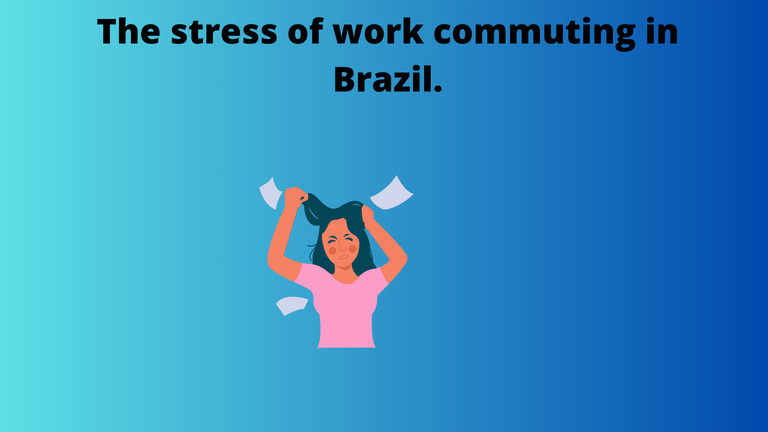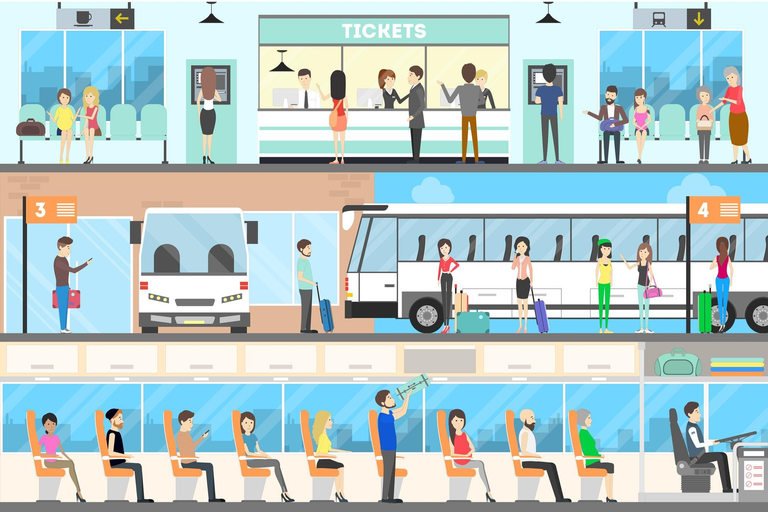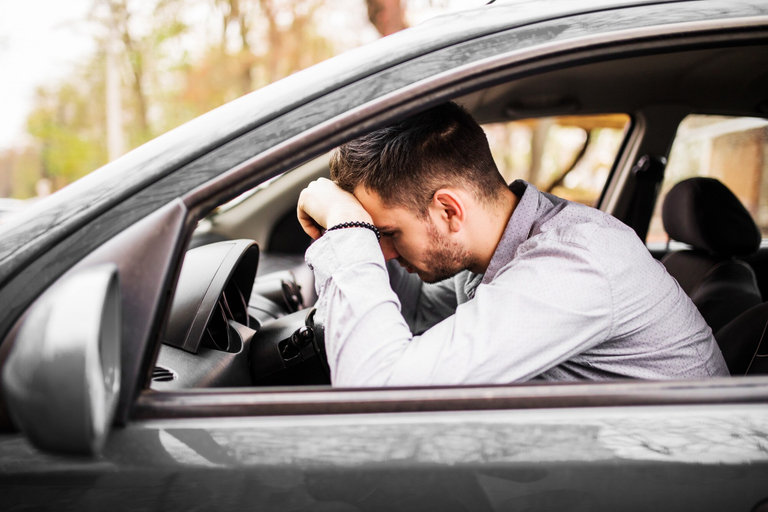
Not long ago, I made a post about my thoughts about public transportation here in Canada, covering the city map but with some difficulties. However, one of my biggest sources of stress when I was living in Brazil was concerning transportation. Rio de Janeiro is much bigger compared to most Canadian cities, if you see from the outside you would imagine that you can live with public transportation only since you have buses (dozens of different lines), a subway (three lines), a tram system, and an above-ground train. But in practice, this transport system works better if you live and work around downtown and the tourist zones( the one with famous beaches).

I used to live in one neighborhood in the north neighborhood and work in two different places. I used to teach in a public high school in a city in the suburb called Sao Joao de Meriti and my Ph.D was in a big infectious disease institute in the entrance of a big highway called Brazil Avenue that connects downtown and the West zone of town. I started the school work at 7 AM and after it ended at 12:30 PM I would go to my other part of the day.
It was possible to use the transport system, but I would need to leave home very early, probably 2 hours before my school started since I could only reach the train to get to the school and the nearest train station I could only go there by bus. Also, the train takes a bit to arrive, in my second travel from school to the institute, I also would spend a lot of time using the train system plus a bus. And my way back home would be by bus. Relying on the bus system in Rio de Janeiro was always challenging since we are talking of traffic jams all around the town not only in the rush hour time ( those were worst of course).
My solution for that was using my car, this way I had a little bit better quality of life, spending less time in my work community which was complicated already. But still, the car didn't save me from escaping from big traffic jams around town. I used to spend at least 1h every day in each way or more sometimes in distances ranging from 11 to 34 km. In addition to that having to stop a lot in the traffic jams made me vulnerable to robbing situations. It is common for robbers to rob cars in Brazil in traffic jams. Listening to stories of people having guns pointed in their heads isn't a good thing to think all the time.
Another point to add to a stress factor in my daily transportation was the constant gasoline price keep climbing in there, which made me adjust my car to use Natural Gas, which at that time was a bit cheaper compared to nowadays.

So Living in Rio de Janeiro work commuting is a stressful moment for the citizens, so stressed that it wasn't uncommon to see dumb traffic fights between two different drivers. Bad public transport system in addition to high costs of fuel, violence and traffic jam. Nowadays I spend 15 minutes maximum between my home and work like I said before, for sure it was a good upgrade in my life.


Não muito tempo atrás, fiz um post sobre meus pensamentos sobre transporte público aqui no Canadá, cobrindo o mapa da cidade, mas com algumas dificuldades. No entanto, uma das minhas maiores fontes de estresse quando eu morava no Brasil era sobre transporte. O Rio de Janeiro é muito maior em comparação com a maioria das cidades canadenses, se você olhar de fora, você imaginaria que você pode viver apenas com transporte público, já que você tem ônibus (dezenas de linhas diferentes), um metrô (três linhas), um sistema de bonde e um trem de superfície. Mas na prática, esse sistema de transporte funciona melhor se você mora e trabalha no centro da cidade e nas zonas turísticas (aquelas com praias famosas).

Eu morava em um bairro na zona norte e trabalhava em dois lugares diferentes. Eu dava aulas em uma escola pública de ensino médio em uma cidade no subúrbio chamada São João de Meriti e meu doutorado foi em um grande instituto de doenças infecciosas na entrada de uma grande rodovia chamada Avenida Brasil que conecta o centro e a zona oeste da cidade. Eu começava o trabalho escolar às 7 da manhã e depois que terminava às 12:30 da tarde eu ia para a outra parte do dia.
Era possível usar o sistema de transporte, mas eu precisava sair de casa muito cedo, provavelmente 2 horas antes do início das aulas, já que eu só conseguia pegar o trem para chegar à escola e a estação de trem mais próxima eu só conseguia ir de ônibus. Além disso, o trem demora um pouco para chegar, na minha segunda viagem da escola para o instituto, eu também passava muito tempo usando o sistema de trem mais um ônibus. E meu caminho de volta para casa seria de ônibus. Depender do sistema de ônibus no Rio de Janeiro sempre foi desafiador, já que estamos falando de engarrafamentos por toda a cidade, não apenas no horário do rush (esses eram os piores, claro).
Minha solução para isso foi usar meu carro, assim eu tinha um pouco mais de qualidade de vida, passando menos tempo na minha comunidade de trabalho, o que já era complicado. Mas ainda assim, o carro não me salvou de escapar dos grandes engarrafamentos da cidade. Eu costumava gastar pelo menos 1h todos os dias em cada sentido ou mais, às vezes em distâncias que variavam de 11 a 34 km. Além disso, ter que parar muito nos engarrafamentos me deixava vulnerável a situações de assalto. É comum que assaltantes assaltem carros no Brasil em engarrafamentos. Ouvir histórias de pessoas com armas apontadas para suas cabeças não é uma coisa boa para se pensar o tempo todo.
Outro ponto a acrescentar ao fator de estresse no meu transporte diário era o preço constante da gasolina lá, o que me fez ajustar meu carro para usar Gás Natural, que naquela época era um pouco mais barato comparado aos dias de hoje.

Então, morar no Rio de Janeiro e ir para o trabalho é um momento estressante para os cidadãos, tão estressados que não era incomum ver brigas de trânsito idiotas entre dois motoristas diferentes. Sistema de transporte público ruim, além de altos custos de combustível, violência e engarrafamento. Hoje em dia passo no máximo 15 minutos entre minha casa e o trabalho como eu disse antes, com certeza foi um bom upgrade na minha vida.

Posted Using InLeo Alpha
 )
)

